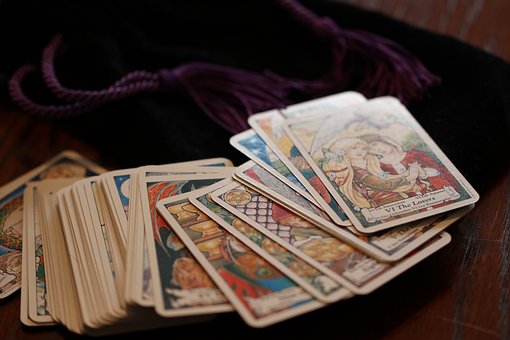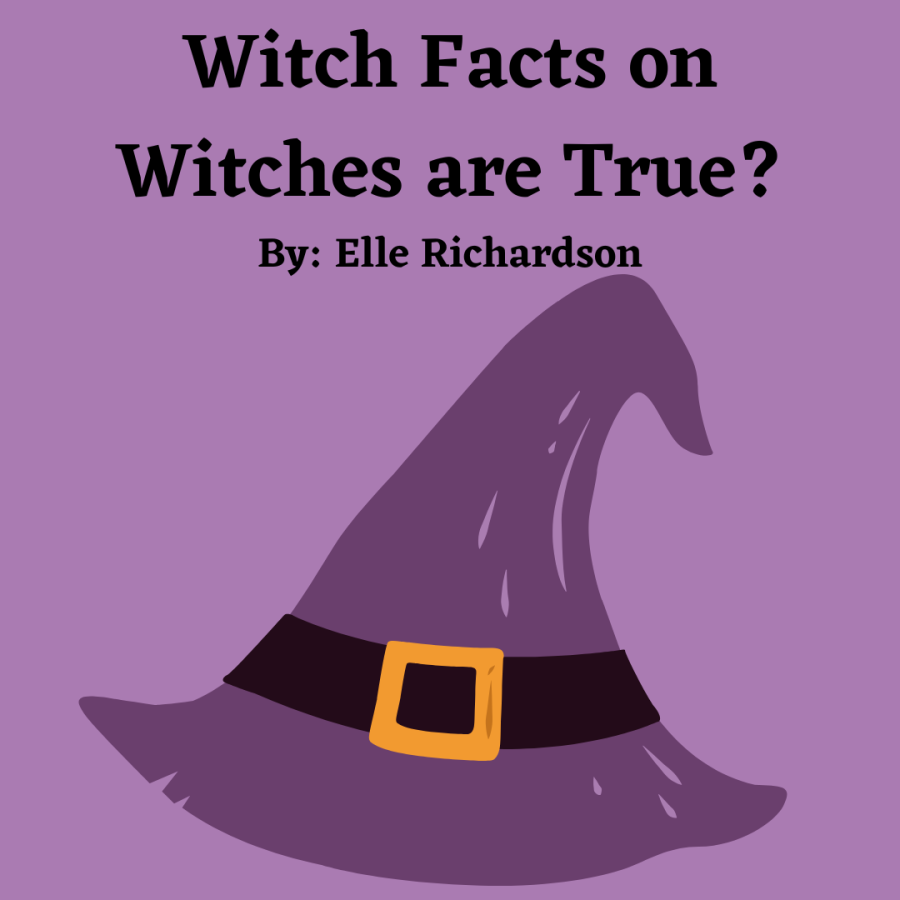Witch Facts on Witches are True?
October 19, 2022
The typical image of a witch is a scrawny lady with green skin, warty skin, a peaked hat, crooked broom, and iconic cackle. Yet this modern image does a great injustice to the true origin of witches. Before the Roman Empire came to be, witches were celebrated as healers and protectors. Yet as pagan religions began to decline in popularity, the disdain for witches started to grow. This disdain grew into fear, resulting in violent measures to eradicate anyone suspected of practicing witchcraft.
Witches first appeared in recorded history in the Bible ironically enough. They appear in the book of Samuel, which was written between 931 BC and 721 BC. The witch was tasked with bringing a prophet’s spirit back to help a king. This is the only time in the Bible in which a witch isn’t condemned, as most stories in the Old Testament define them as diabolical and say they carry out the Devil’s work.

The fear of witches wasn’t in full swing until the 1400’s. This corresponds with when the church started gaining power in Europe. This mania was fueled by the publication of a book titled “Malleus Maleficarum”, or “The Hammer of Witches”. This was a handbook on the identification, persecution, and interrogation of witches. It was adopted by the Protestant and Catholic churches; for the next 100 years it sold more copies than the Bible. People accused of witchcraft were typically single women or widows and were coerced into confessing to witchcraft via torture. Witchcraft accusations were also used to silence political opponents or women deemed too independent. Some even used witchcraft accusations to target homosexuals.
Between 1500 and 1660 there were approximately 80,000 executions of suspected witches. Germany had the highest execution rate, with Ireland having the lowest. These executions were normally in the form of burning at the stake, beheading, or hanging. The most common method of testing whether or not a person was truly a witch was throwing the accused into a body of water with their arms and legs bound. If the accused sank, they were a witch. If they floated, they were innocent, yet if they sank they were a witch. Yet just when these myths started getting debunked in Europe and the public relaxed, the fear only grew in the Americas.
Despite having its roots in Europe, witch hysteria quickly spread to the Americas in the late 1600’s. The most well-known example of this were the Salem witch trials of 1692. These started when two young girls started suffering from full-body contortions and uncontrollable screaming. Although scientists and historians agree this was probably due to a poisonous fungus, the people of Salem attributed this to the workings of a local witch. As more girls started portraying similar symptoms, the public started making accusations. One of the three accused, a slave by the name of Tituba, allegedly confessed to using black magic and accused many people in the community of doing so as well. A total of 150 people were accused during the panic that ensued, with 18 being executed, including six men.

Salem, Massachusetts wasn’t the only place plagued by witch hysteria in America during the 1600’s. The first witch trial in America actually took place in Connecticut in the year 1647. In the 50 years that followed, there were 46 witchcraft accusations and 11 executions for witchcraft in Connecticut. Yet other colonies took a more passive approach to witchcraft. The prime example of this was Virginia, which had no witchcraft-related executions. The Virginia legislation passed a law in 1655 making it unlawful to falsely accuse a person of witchcraft.
Nowadays, the witches of the past are marketed towards Halloween as the opposite of fairies. While people who practice the religion Wicca are the closest we have to modern-day witches, they are scarcely persecuted and any rituals involved are purely beneficial and non-violent. These witches are also nothing like the commercialized versions we commonly associate with the stereotypical “witch” as well. Witches went from being ostracized members of society subjected to violent persecution to fictional characters in children’s stories and pop culture.









Annabelle Frazer • Oct 19, 2022 at 8:51 AM
Love this article Elle!